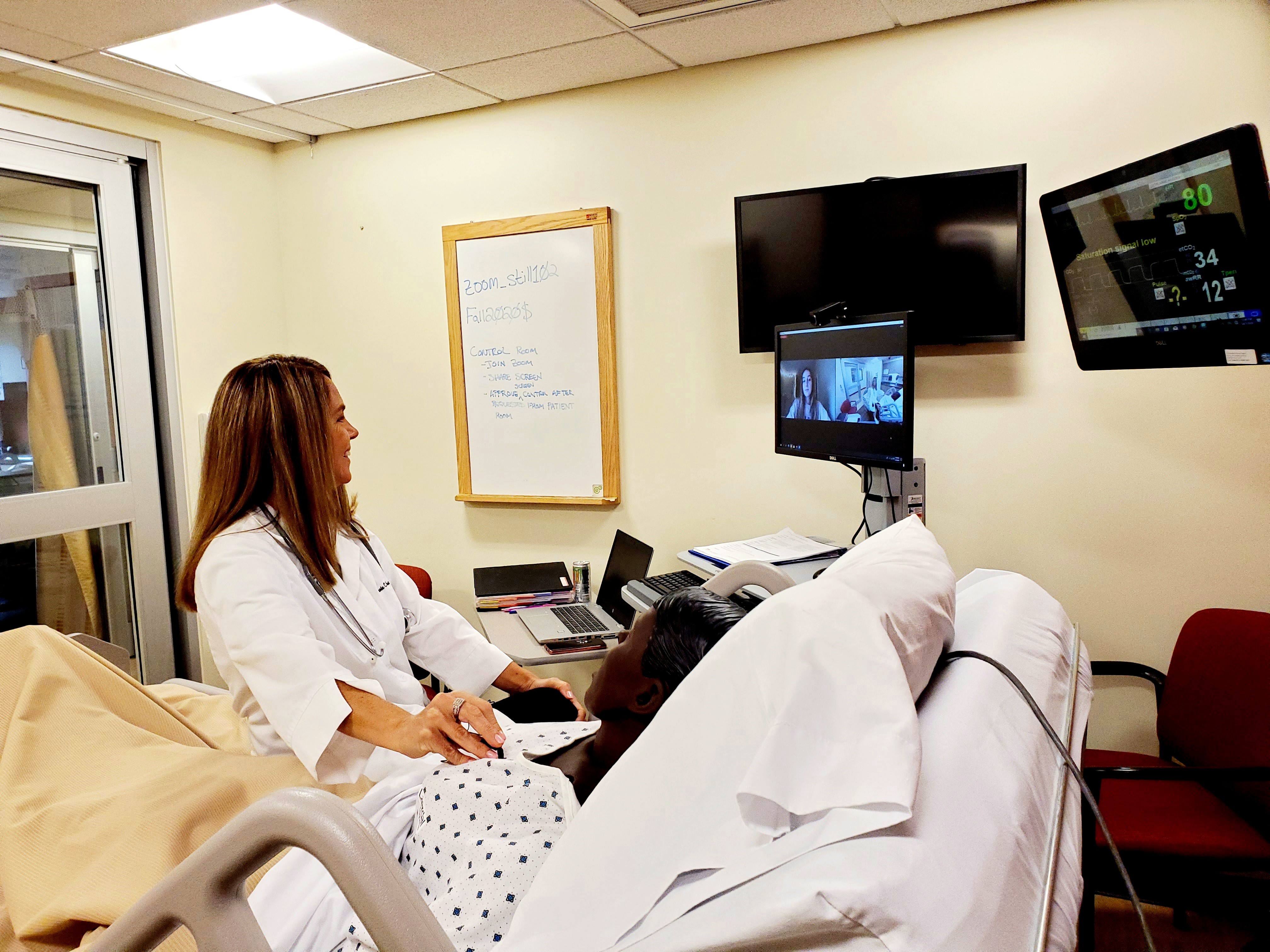 Nursing instructor Dr. Melanie Best discusses the vital signs of a simulation lab
mannequin with a student via Zoom. The vitals are displayed on the Electronic Health
Record carts that Clarion nursing faculty and computing services staff collaboratively
developed to enhance student experiences during distance learning.
Nursing instructor Dr. Melanie Best discusses the vital signs of a simulation lab
mannequin with a student via Zoom. The vitals are displayed on the Electronic Health
Record carts that Clarion nursing faculty and computing services staff collaboratively
developed to enhance student experiences during distance learning.
When the university moved classes to remote delivery for the fall semester, Dr. Deborah Kelly, chair of the nursing department, and Steve Selker, associate director of computing services, began to discuss how to replicate – as much as possible – the classroom experiences that Clarion's nursing programs delivers to students.
"After some brainstorming within the team, we focused on using the existing electronic health record carts in the skills and simulation labs," Selker said. "These are mobile computer workstation carts like those in a doctor's office. Our Learning Technology Center team outfitted them with a wide angle web camera and audio lapel mic system and turned them into mobile Zoom carts."
Traditionally, students use them to scan medication bar codes and update electronic records. These carts are essential in preparing students to enter the workforce by providing experiences with documentation, implementation of physician orders and administration of medications.
Keith Mohnkern and Lindsay Johns, Learning Technology Center staff, worked with faculty to fine tune the equipment.
Kelly explained how it works.
"(Nursing faculty) Dr. Melanie Best and Dr. Pamela Karg are using our simulation lab to create real-time experiences, such as recent cardiovascular and respiratory assessments, with the students. Cameras are set up in the simulation lab so that the faculty can teach from the bedside. The faculty use lapel mics that they place on the patient so that the students can listen remotely to heart and lung sounds, just as though the student had their stethoscope on the patient," she said.
Patients are simulation mannequins, which provide realistic scenarios to test students' clinical and decision-making skills and build their confidence before they enter an actual health care environment.
"The students perform a virtual assessment and check the patient's vital signs, just as they would in a real situation. Students are placed in groups in breakout rooms, and each group is given a different scenario. Once they go through the scenario, they are required to document their findings in the electronic health record and are graded on their performance," Kelly said.
The technology has been implemented on the Clarion campus, and Kelly hopes to extend it to Venango campus and the Somerset location, too. Freshmen, sophomores and juniors in the bachelor's degree program are in classroom phases of their training and are studying remotely. Senior BSN, as well as first- and second-year associate degree students are attending clinical rotations at healthcare facilities.
"This collaborative effort is just one example of the length that Clarion University is going to create an inclusive remote learning experience," Kelly said. "Many other nursing programs across the country are purchasing virtual simulations at a cost to the students. CU's nursing program decided to take a different approach."